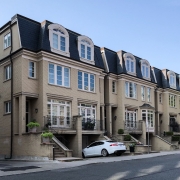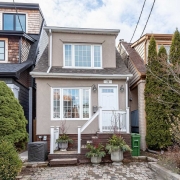On the shoulders of higher interest rates, Canadian housing affordability continued to worsen in the closing quarter of 2018, according to National Bank’s Housing Affordability Monitor.
To measure housing affordability each quarter in 10 major markets, National Bank looks at how long it would take a typical household to save for a downpayment on median-priced home as well as what share of income monthly mortgage payments would eat up.
For downpayment savings, National Bank economists assume a household saves 10 percent of its pre-tax income. Mortgage payment calculations are based on a 25-year amortization period and a five-year term.
The results from these and other National Bank number-crunching exercises found within the report may surprise readers — even though this marks the 14th straight quarter that affordability has eroded in Canada. Here are 10 of the bank’s findings.
1. Renting a condo will now cost you less than buying one.
National Bank compares what someone would spend on monthly mortgage payments versus the average rent. Since 2011, buying a two-bedroom condo in Canada was, on average, cheaper than renting a similar unit. That changed at the start of 2018, and remained the case by the end of that calendar year.
2. It would take more than 28 years for a typical Vancouver household to save for a downpayment on a home.
A median-earning household in Vancouver would need 340 months to put away enough for a downpayment on a home, including all popular housing types. Some consolation for would-be buyers: when looking exclusively at condos, that timeline drops to 61 months.
3. In Toronto, households have to save for 102 months to afford a downpayment.
The average dating back to 2000 is 45 months, highlighting how Toronto’s ownership-housing costs have skyrocketed in recent years. The number is also well above the national average of 58 months.
4. Households in Canada need to spend half their incomes to cover mortgage payments.
The share of the median Canadian income required to afford monthly mortgage payments continues to rise. At 50.5 percent, the current share is up 3.1 percentage points from a year ago.
5. Despite affordability challenges, downtown condo prices in big Canadian cities are far cheaper than in other global urban centres.
On a price per square foot basis (in US funds), even Canada’s priciest cities compare favourably with other international destinations for downtown living. For 650-square-foot downtown Vancouver apartment, buyers need to shell out $770 per square foot. That may seem hefty, but in Hong Kong, the priciest market National Bank examined, the cost is $2,858 per square foot, and eight other markets crossed the $1,000-per-square-foot threshold.
6. Two Canadian cities saw affordability improve — but only marginally.
Calgary and Edmonton both saw affordability improve slightly on a quarter-over-quarter basis. In Calgary, mortgage payments would require about a third of a household’s mediancome, down just 0.3 percentage points from the third quarter. Meantime, an average household in Edmonton would need to dedicate 22.7 percent of their income to mortgage-related costs, down 0.1 percentage points.









 Maziar Moini, Broker of Record - Home Leader Realty Inc.
300 Richmond St. W., #300, Toronto, ON M5V-1X2
Maziar Moini, Broker of Record - Home Leader Realty Inc.
300 Richmond St. W., #300, Toronto, ON M5V-1X2



